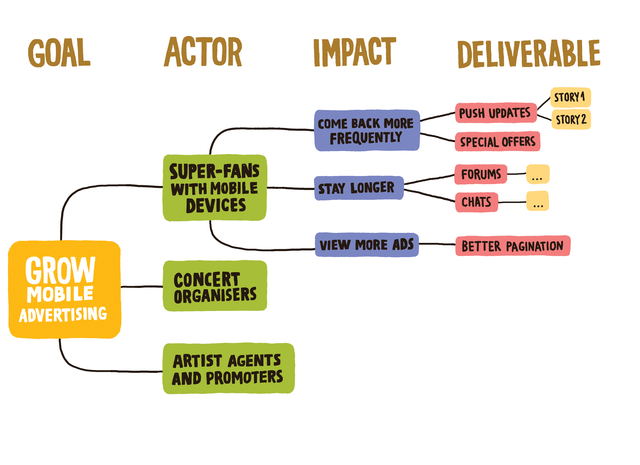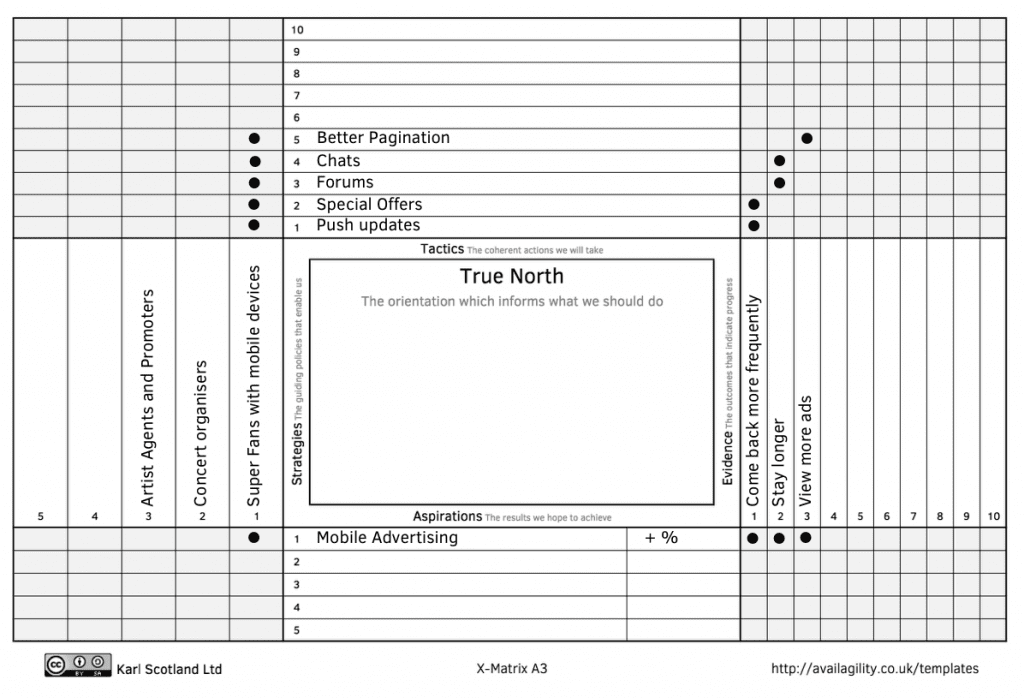I’ve had a couple of conversations in recent weeks in which Impact Mapping came up in relation to Strategy Deployment so here’s a post on my thoughts about how the two fit together.
An Impact Map is a form of mind-map developed by Gojko Adzic, visualising the why, who, how and what of an initiative. More specifically, it shows the goals, actors involved in meeting the goals, desired impact on the actors (in order to meet the goals), and deliverables to make the impacts. The example below is from Gojko’s website.
As you can see, an Impact Map is very simple, reductionist visualisation, from Goals down to Deliverables, and while the mind map format doesn’t entirely constrain this, it tends to be what most examples I have seen look like. It does however work in such as way to start with the core problem (meeting the goal) and allow people to explore and experiment with how to solve that problem via deliverables. This is very much in line with how I define Strategy Deployment.
Lets see how that Impact Map might translate onto an X-Matrix.
The Goal is clearly an Aspiration, so any relevant measures would neatly fit into the X-Matrix’s bottom section. At the other end, the Deliverables are also clearly Tactics, and would neatly fit in the X-Matrix-s top section. I would also argue that the Impacts provide Evidence that we are meeting the Aspirations, and could fit into the X-Matrix’s right-hand section. What is not so clear is Strategy. I think the Actors could provide a hint, however, and I would suggest that an Impact Map is actually a good diagnosis instrument (as per Rumelt) with which to identify Strategy.
Taking the 4 levels on an Impact Map, and transposing them onto an X-Matrix, creates a view which can be slightly less reductionist (although not as simple), and opens up the possibility of seeing how all the different elements might be related to each other collectively. In the X-Matrix below I have added the nodes from the Impact Map above into the respective places, with direct correlations for the Impact Map relationships. This can be seen in the very ordered pattern of dots. New Tactics (Deliverables) and Evidence (Impacts), and possible more Aspirations (Goals), would of course also need to be added for the other Strategies (Actors).
Even though this is a very basic mapping, I hope its not too difficult to see the potential to start exploring what other correlations might exist for the identified Tactics. And what the underlying Strategies really are. I leave that as exercise for you to try – please leave a comment with what ideas you have!
This post is one of a series comparing Strategy Deployment and other approaches.


